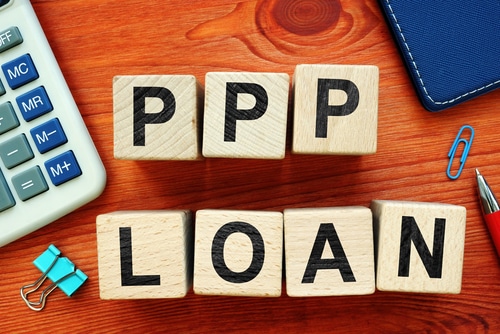Amid rising COVID cases, reinforced lockdowns, and a still-struggling economy, the Paycheck Protection Program (PPP) is positioned to make a return—and small businesses across the country will be eager to apply as soon as the program is reauthorized.
Debates concerning the program’s size, scale, and scope abound. But despite all of the uncertainty and noise, one fact is clear: Federal aid isn’t over and done with. And as a lending institution, that means you need to prepare your staff and processes for another wave of PPP lending—one that, hopefully, you’ll be better equipped to handle than the last.
The key? Online lending. But if you’ve learned one thing since last April, it’s that online lending, particularly when it comes to PPP loans, means more than just accepting an application over the web. And applicants need more than just an online application as well. They need a fully digital experience from end-to-end.
If you want to support the next round of PPP lending, community banks and other lenders ought to reconsider their SMB lending process. That starts with confronting all of the challenges you faced throughout the first wave of PPP, and putting forward a solution that addresses them.
Here’s how you can do that.
Breaking down the barriers to PPP lending
Six months ago, after you accepted a PPP application, there were a slew of steps that unfolded between you and your applicant—and they were all manual, even if you initially accepted the application online. Your loan officers would go through the following slow, inefficient, and frustrating steps, most likely succeeding through brute force:
- Collecting documents. Whether your employees were digging through thousands of emails, sifting through piles of paper mail, processing inefficient faxes, or all of the above, your PPP document collection processes were probably as manual—and as tedious—as it gets. And all too often, people probably couldn’t even find what they were looking for.
- Locating missing documents. From disorganized inboxes to stacks of financial and identification forms, your documentation stores were nothing if not overwhelmed. Finding missing items meant having loan officers locate them themselves—or getting back in touch with applicants and starting the communication cycle over again from scratch.
- Transferring data into E-Tran. At the end of the collection and review process, every complete application marked the start of another tedious and time-consuming manual process: retyping everything in the application and transferring it into E-Tran, the system the SBA uses for processing PPP applications.
It’s time to face the facts. These processes were costly. They were inefficient. And ultimately, they were ineffective. Countless small businesses remained without funds, and though this was a culmination of many factors, extensive delays and ill-equipped lending institutions certainly played a part.
Adopting a solution that offers end-to-end efficiency, digitization, and automation for every PPP loan—from origination, to underwriting, to funding, and even repaying—can save you from these problems come your next wave of applicants. And they can save the small businesses they were originally designed to help, too.
With an end-to-end solution, your online application system will do the following:
- Request the information the SBA requires. By basing application intake off of the SBA’s requirements, your system can evolve seamlessly with any changing requirements or regulations, seamlessly updating to reflect what’s needed and cutting out what’s not. The result? A process that saves everyone valuable time and labor.
- Accept the documents that need to be provided. With digital uploading capabilities, an end-to-end PPP solution will automatically request, capture, and process any necessary financial and identification documents, streamlining what can be weeks of back-and-forth, paper-based exchanges.
- Catch any missing documents. By automatically detecting missing information, your solution ought to automate communication with the applicant—alerting them about what’s needed with instant notifications, and allowing them to fill in the blanks as quickly as possible, without your loan officer ever having to lift a finger.
As the second wave of PPP lending approaches, make sure you’re prepared. This time, you know what to expect, and turning to the right technology can determine whether or not your small business customers survive—or at the very least, whether they stick around.



